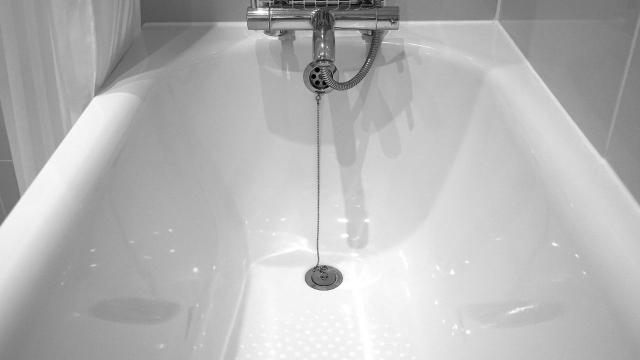Within a few seconds of walking into the bathroom of my new apartment, I knew I’d be living in one of the majority of American homes with hard water. The limescale on the faucets was one clue, but the rust stains on my sink, tub, and toilet were what really tipped me off. While the limescale was relatively easy to remove, my usual rust stain remover—one part warm water and one part white distilled vinegar in a spray bottle—wasn’t cutting it on some of the tougher stains.
Over the years, I tried various other methods and cleaning products, including Bar Keepers Friend, but some of the stains appeared to be there to stay. That is, until I used citric acid.
I initially purchased a bag of citric acid for cooking, upon the recommendation of Lifehacker’s former Senior Food Editor, Claire Lower, but quickly began using it for cleaning, too—including getting rid of the impossible-to-remove rust stains in my bathroom. Here’s how to replicate the results.
Where to buy citric acid
While you can usually find a small container of citric acid in the spice aisle of the grocery store, it’s usually cheaper to buy a one- or two-pound bag of it online—though if you use a lot of it, there are larger bags that are an even better value.
If you plan to use the citric acid for cooking as well as cleaning, be sure that the label indicates that it’s “food grade.” Because I go through more citric acid for cleaning, as soon as I get a new bag, I’ll fill a jar to use for cooking, and then keep the rest of the bag with my cleaning supplies.
How to remove rust stains in sinks with citric acid
The process of removing rust stains with citric acid is pretty straightforward:
First, use a spoon, scoop, or your fingers to sprinkle citric acid over the rust stain, covering its entire area. The amount you need depends on the severity and size of the stain, but it’s usually a good idea to start with a lighter coating, and then add more if necessary.
Next, lightly spritz or add a few drops of clean water to dampen the citric acid—not wash it away. Let it sit for a minute, then use a toothbrush (or similar tool) to work the citric acid paste into the stain.
Although I don’t have any rust stains in my sink or tub at the moment, I did have some around my toilet floor bolts. Here’s what it looked like during the toothbrush stage:

In this case, all it took was a few seconds of brushing, a quick rinse with clean water, and the rust stains on the porcelain were gone. Here’s the before-and-after:

I used Alpha Chemicals Citric Acid ($9.49 for a one-pound bag):

Unfortunately, many of the rust stains that I had on my sink and tub didn’t go away this easily. For those, this initial round made a dent in the stain, but I still had a ways to go. So, I’d put a thicker coating of citric acid on the stain, spritzed some water on it, and let it sit.
Typically, I check on the stain after an hour. If it’s still there, continue to let it sit, and check again a few hours later—or just leave it overnight. It took between four and six hours for my worst rust stains to rinse away.
Lead Image Credit: iStock

Leave a Reply
You must be logged in to post a comment.